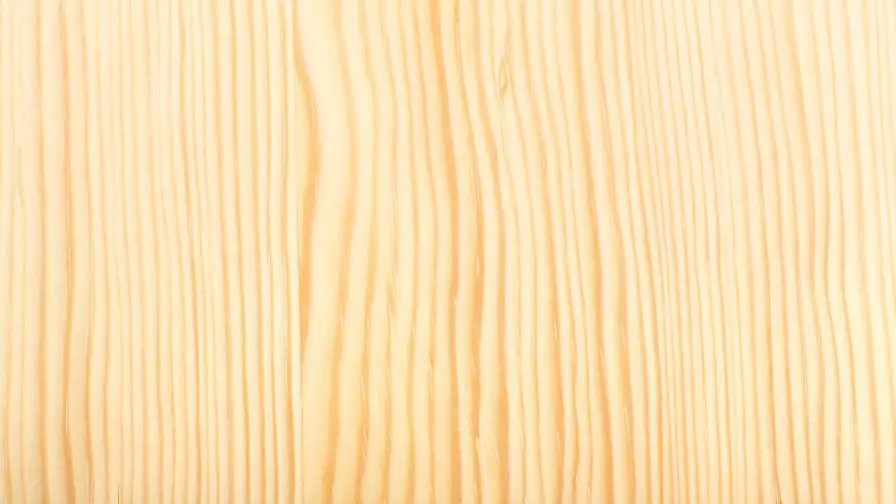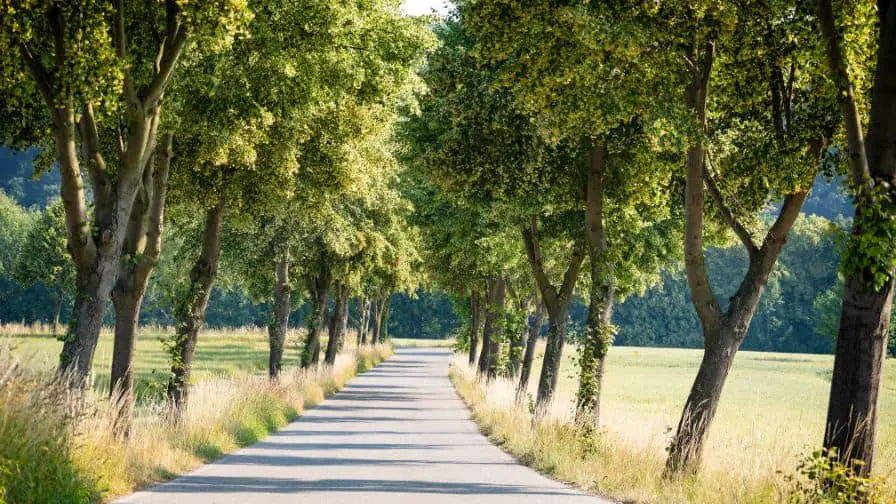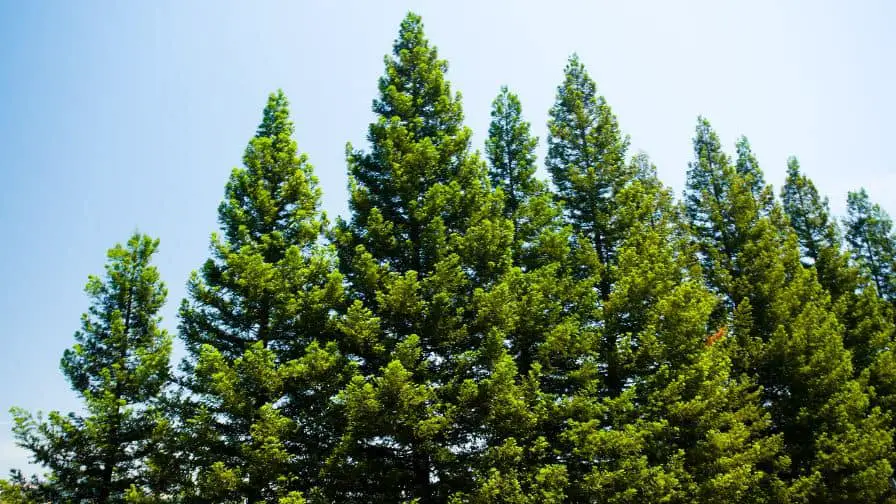
Do you know the difference between Basswood vs Pine? If not, don’t worry – you’re not alone! Many people are unsure of the differences between these two types of wood.
In this blog post, we will explore the pros and cons of Basswood vs Pine so that you can make an informed decision about which type of wood is best for your next project.
What Is Basswood?
Basswood is a hardwood tree that is native to Eastern North America. The tree grows to be about 65-120 feet tall and has large, heart-shaped leaves. Basswood has a color pale light brown and has a straight grain. The tree is mostly used for lumber.
The scientific name for basswood is Tilia americana. The tree is also known as the American linden and bee tree. The wood of the basswood tree is light, soft, and easy to work with. It has a low resistance to shock and is not strong enough for use in construction.

What Is Pine Wood?
Pine is a softwood that grows in the Northern Hemisphere. There are more than 100 species of Pine, including sugar Pine, Austrian Pine, and Eastern White Pine. It is also easy to work with and takes stain and paint well.
Pine has a tree size of 65-100 ft with a conical shape and orange-brown to reddish-brown bark. The leaves are needle-like and grow in clusters of two or three. Pine needles are long (up to eight inches), thin, and sharp.

Basswood Vs Pine – Price
The price tag of basswood and pine can vary greatly. Basswood can range from $3.45-$7.30 per board foot depending on quantity and Pine can range from $1.40-$2.18 per board foot.
Both kinds of wood are widely available and reasonably priced, making them a great option for budget-conscious shoppers.
So, which one is the best for you? If you’re looking for a lower-priced option, then pine may be the way to go. However, if you’re willing to spend a bit more for higher quality wood, then basswood is the better choice.
Basswood Vs Pine – Janka Hardness
If you’re looking for a hardwood to use in your next project, you might be wondering if basswood or pine is the best option. Here’s a look at the Janka hardness of each type of wood.
Basswood has a Janka hardness of 410.
Various Pine Species Janka Hardness:
- Heart Pine – 1225
- Southern Yellow Pine – 870
- White Pine – 420
- Southern White Pine – 380
Basswood Vs Pine – Durability
Even though Pine is a softwood, they are still more durable than Basswood which is a hardwood. Pine is also resistant to rot and insect infestation and can last for decades with proper care.
Basswood, on the other hand, is a hardwood that is not as durable as pine. Basswood is also susceptible to rot and insect infestation and will only last for a few years without proper care.
characteristics of BASSWOOD and why it’s AMAZING (pattern makers dream)
Subscribe to Live Free on YouTube
Basswood Vs Pine – Wood Type
Basswood’s species is Tilia Americana and is also commonly referred to as American Linden. It’s a hardwood that’s light in color with a straight grain. Due to its closed pores, basswood is very easy to work with – making it ideal for carving, woodworking and even electric guitars!
Pine on the other hand, has many different species. The most common pine used for woodworking is the Sugar Pine – which is known for being one of the tallest and widest pines in North America. Pine has a more course grain than basswood, but that doesn’t make it any less versatile. In fact, pine is often used in construction due to its stiffness and strength.
Basswood Vs Pine – Tree Size
When it comes to tree size, both basswood and pine trees can range from 65 to over 100 feet.
Basswood trees can grow up to 120 feet while pine trees can grow up to 100 feet.
Basswood Vs Pine – Location
Basswood trees are located in North America. Pine trees are located in Europe, Asia, and North America.
Basswood trees prefer moist, well-drained soils. Pine trees prefer dry, sandy soils.
Basswood trees are more tolerant of shade than pine trees. Pine trees need full sun to grow properly.
Basswood trees are slower growing than pine trees. Pine trees grow quickly and can reach heights of 100 feet or more.
Basswood Vs Pine – Color
When it comes to color, basswood and pine are relatively similar. Basswood has a pale white to light brown sapwood, while the heartwood is not well defined.
Pine, on the other hand, has yellowish-white sapwood and light reddish/yellowish brown heartwood that can create a beautiful contrast. In terms of color, both kinds of wood are quite versatile and can be stained or painted to achieve the desired look.
Best Results for Woodworking with Pine Wood
Subscribe to WoodWorkWeb on YouTube
Basswood Vs Pine – Grain
When it comes to grain, both Basswood and Pine have straight grains. However, Pine is stronger than basswood, making it the better choice if you need a sturdy piece of wood; it also has a slightly more textured grain than basswood that can give your project a rustic look. If you’re looking for a more refined look, Basswood is the way to go.
Basswood Vs Pine – Rot Resistance
If you’re looking for wood to build something that will last, you’ll want to choose one that is resistant to rot.
Basswood is rated as non-durable, while pine is rated moderate to low in decay. This means that basswood is not a good choice for an outdoor project where it will be exposed to the elements. Pine, on the other hand, is a better choice for outdoor projects since it is more resistant to rot.
So, if you’re looking for wood to build something that will last with outdoor projects, pine is the better choice.
Basswood Vs Pine – Odor
When it comes to odor, both basswood and pine have their pros and cons. Basswood doesn’t have any characteristic odor that makes it stand out, white pine has a faint, resinous odor that some people find pleasant and others find off-putting. If you’re sensitive to smells, basswood may be the better choice for you because it’s more neutral.
Basswood Vs Pine – Sustainability
Both kinds of woods are sustainable. They are both easy to grow and don’t require much in the way of pesticides or other chemicals. Basswood is a little more sustainable than pine because it grows faster.
If you are looking for wood to use in a project that will last for many years, basswood is a good choice. Pine is a good choice if you are looking for cheaper wood.
Tree Talk: American Basswood
Subscribe to Forests for the Bay on YouTube
Basswood Vs Pine – Uses
Basswood is a light-colored hardwood that is commonly used in the manufacture of plywood, lumber, musical instruments, and many more. It is also a popular choice for carving and turning wood projects on a lathe.
Pine is a softwood that is typically used in subflooring, boxes, crates, posts/poles, and interior trim It is also a popular choice for crafting and DIY projects.
Basswood Vs Pine – Related Species
Basswood related species are the American basswood (Tilia americana), the European basswood or common lime (Tilia platyphyllos), and the little-leaf linden (Tilia cordata). All three are members of the genus Tilia, which contains about 30 species of trees native to temperate regions of the Northern Hemisphere.
Pine has a lot more related species than Basswood – there are over 100 species of Pine! Pines are evergreen trees with needle-like leaves. The wood is typically light in color with a coarse grain.
Here are some related species of Pine:
- Austrian Pine: The Austrian Pine is a species of pine that grows in central and Eastern Europe. The tree can grow up to 115 feet tall and has a reddish-brown bark.
- Caribbean Pine: The Caribbean Pine is a species of pine that grows on the islands of the Caribbean Sea. The tree can grow up to 100 feet tall and has a reddish-brown bark.
- Eastern White Pine: The Eastern White Pine is a species of pine that grows in eastern North America. The tree can grow up to 100 feet tall and has a light-colored bark.
- Jack Pine: Jack Pine is a species of pine that grows in Canada and the Northern United States. The tree can grow up to 80 feet tall and has a reddish-brown bark.
- Red Pine: The Red Pine is a species of pine that grows in eastern North America. The tree can grow up to 100 feet tall and has a reddish-brown bark.
- Scotch Pine: The Scotch Pine is a species of pine that grows in Northern Europe. The tree can grow up to 115 feet tall and has a reddish-brown bark.
- Swiss Pine: The Swiss Pine is a species of pine that grows in central and Southern Europe. The tree can grow up to 100 feet tall and has a reddish-brown bark.
- Jeffrey Pine: The Jeffrey Pine is a species of pine that grows in Western North America. The tree can grow up to 165 feet tall and has a reddish-brown bark.
- Khasi Pine: The Khasi Pine is a species of pine that grows in Northeast India. The tree can grow up to 130 feet tall and has a light reddish-brown bark.
- Limber Pine: The Limber Pine is a species of pine that grows in Western North America. The tree can grow up to 80 feet tall and has a light-colored bark.
- Loblolly Pine: The Loblolly pine is a species of pine that grows in the Southeastern United States. The tree can grow up to 115 feet tall and has a reddish-brown bark.
- Longleaf Pine: The Longleaf Pine is a species of pine that grows in the Southeastern United States. The tree can grow up to 50 feet tall and has a heartwood of light brown color.
- Maritime Pine: The Maritime Pine is a species of pine that grows in Southwest Europe. The tree can grow up to 115 feet tall and has a light reddish-brown bark.
- Ocote Pine: The Ocote Pine is a species of pine that grows in Mexico and Central America. The tree can grow up to 115 feet tall and has a reddish-brown bark.
- Ponderosa Pine: The Ponderosa Pine is a species of pine that grows in Western North America. The tree can grow up to 165 feet tall and has a reddish-brown bark.
- Radiata Pine: The Radiata Pine is a species of pine that grows in central and Southern Coastal California. The tree can grow up to 100 feet tall and has a light brown bark.
- Sand Pine: The Sand Pine is a species of pine that grows in the Southeastern United States. The tree can grow up to 30 feet tall and has a reddish-brown bark.
- Scots Pine: The Scots Pine is a species of pine that grows in Europe and Northern Asia. The tree can grow up to 115 feet tall and has a light reddish-brown bark.
- Shortleaf Pine: Shortleaf Pine is a species of pine that grows in the Southeastern United States. The tree can grow up to 100 feet tall and has a brown bark.
- Slash Pine: The Slash Pine is a species of pine that grows in the Southeastern United States. The tree can grow up to 100 feet tall and has a reddish-brown bark.
- Spruce Pine: Spruce Pine is a species of pine that grows in the Southeastern United States. The tree can grow up to 100 feet tall and has a reddish-brown bark.
- Sugar Pine: The Sugar Pine is a species of pine that grows in mountainous regions of the Pacific Coast of the United States. The tree can grow up to 200 feet tall and has a light brown bark.
- Sumatran Pine: The Sumatran Pine is a species of pine that grows in Southeast Asia. The tree can grow up to 130 feet tall and has a light reddish-brown bark.
- Table Mountain Pine: The Table Mountain Pine is a species of pine that grows in the Eastern United States. The tree can grow up to 65 feet tall and has a brown bark.
- Western White Pine: The Western White Pine is a species of pine that grows in Western North America. The tree can grow up to 150 feet tall and has a light brown bark.
- Virginia Pine: The Virginia Pine is a species of pine that grows in the Eastern United States. The tree can grow up to 65 feet tall and has a reddish-brown bark.
As you can see, many different types of Pine Trees can be found all over the world, unlike Basswood Trees. Each type of tree has its unique characteristics, which make it well-suited for different purposes.
Subscribe to Mean’s Woodshop on YouTube
Basswood Vs Pine – Pros And Cons
Here’s a look at the pros and cons of each type of wood to help you decide which one is the best for your project:
Basswood pros:
- Because Basswood is a hardwood, it is more durable than other types of softwood.
- It’s more dimensionally stable which means it won’t swell or shrink as much as Pine.
- It’s easier to work with because it’s softer.
Pine pros:
- Pine is less expensive than basswood.
- Pine is more prevalent so you’ll find it at most lumberyards.
- Pine is softwood so it’s easy to carve.
- Some species are denser and stronger than basswood
Basswood cons:
- It was more expensive because it’s hardwood.
- It’s not as prevalent as pine so you might have a hard time finding it.
Pine cons:
- it’s not as dimensionally stable
So, which one should you choose? If you’re looking for an inexpensive wood that’s easy to work with, Pine is a good choice. But if you want a wood that will hold up better over time, Basswood is the way to go.

What Are The Differences Between Basswood Vs Pine?
Basswood and Pine are two of the most popular woods used in carpentry and woodworking. They both have their own unique set of characteristics that make them ideal for different projects.
Here’s a quick rundown of the key differences between Basswood vs Pine:
- Basswood is a hardwood, while pine is classified as a softwood.
- Basswood is a light-colored wood, while pine can range from pale yellow to reddish brown.
- Basswood is easier to work with than pine, but it is also more expensive.
So, which one should you choose for your next project? It depends on what you’re looking for. If you need strong, durable wood, then Basswood is a good option. If you’re looking for a cheaper alternative, then Pine might be the way to go. Ultimately, it all comes down to personal preference.
What Are The Similarities Between Basswood Vs Pine?
Basswood and Pine have a lot of differences but they also have some similarities.
Let’s take a look at some similarities between the two.
- Both Basswood and Pine are popular choices for woodworking projects. You can use either of them for a variety of projects such as lumber, veneer, and plywood because
- Both Basswood and Pine have a fine, even grain that makes them very easy to work with. So you can use either of them for your next woodworking project without any worries.
These are just some of the similarities between Basswood and Pine. As you can see, they are both great choices for woodworking projects because they are easy to work with. So it comes down to your personal preference as to which one you choose.

Basswood Is Best For:
- Carvings: With a fine, even grain and minimal flaking, Basswood is an excellent carving wood.
- Lumber: Basswood lumber is soft and light, making it easy to work with.
- Musical Instruments: The close grain of basswood makes it ideal for musical instruments like guitars and violins.
- Veneer: Because of its uniform grain, basswood is often used for veneer.
- Plywood: Basswood plywood is strong and stable.
- Wood Pulp/Fiber Products: Basswood is often used in wood pulp and fiber products because of its absorbency.
Pine Is Best For:
- Veneer: Lightweight and rot resistant, making it ideal for furniture or cabinets that need a thin layer of wood.
- Plywood: One of the most versatile woods, often used for subfloors, sheathing, boxes, and crates.
- Sheathing: Used to cover the exterior walls of a home or other structure.
- Subflooring: The layer of wood that lies beneath the finished flooring.
- Posts/Poles: Can be used for fences, support beams, or flagpoles.
- Interior Trim: Often used for doors, baseboards, or molding.
- Cabinets: Pine is a popular choice for cabinets due to its durability and low cost.
What Wood Is Closest To Basswood?
There are many types of wood, but only a few are comparable to basswood in terms of quality. The woods closest to basswood are pine, soft maple, and birch. Each of these woods has its own unique set of characteristics that make it ideal for certain projects.
- Birch is the best alternative to Basswood. If you’re looking for a wood that’s similar to Basswood in terms of hardness and weight, Birch is the best option. It’s also more expensive than both Pine and Soft Maple.
- Pine is the next best alternative to Basswood. If you’re looking for another wood that’s similar to Basswood in terms of weight and hardness, Pine is a good option. It’s also more affordable than Basswood, making it a great choice if you’re working with a tight budget.
- Soft Maple is another alternative. If you need a wood that’s similar to basswood in terms of hardness, but slightly lighter in weight, Soft Maple is a good option.



